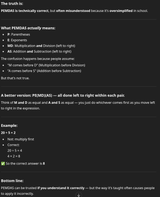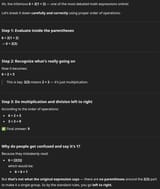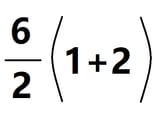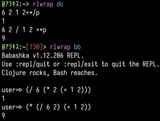>>76502105
>you can't just say that it is different and not tell people why
When you have a function like "2(1+2)" instead of "2x(1+2)" it's implied that the whole function is supposed to be treated as a single component of the equation, rather than 2 separate ones. You could write it like "(2(1+2))", because that's what's implied, but it becomes tedious and confusing when you get a more complex equation than the primary school one itt, so unless you see the multiplication sign, it's always implied. A division sign ÷ is a very beginner level notation and isn't really used in real maths. Instead, in the real world, you use fractions. The equation "6÷2(1+2)" really should be written as "6/2(1+2)". Treating the "2(1+2)" as 2 different functions (as if there was an invisible "x" between the "2" and the (1+2)" would change the way you write it out, so it would instead look like "(6/2)x(1+2)", which doesnt work in a longer equation with multiple instances of similar functions because you have to them make these arbitrary decisions about which components are counted as fractions and which ones aren't it has to be consistent to make sense. The idea that you solve from "left to right" is actually kind of wrong, really you're solving all the functions along a particular "tier" at the same time. I.e. You solve all the (parentheses) at the same time, then all the exponents, then all the multiplications and divisions, then all the additions and subtraction, not left to right but all at once because every number within that "tier" fits into each other mathematically in a way that it doesn't matter which order you do it in.


















